#jingdezhen
Explore tagged Tumblr posts
Text
761 notes
·
View notes
Text

Teapot, made in Jingdezhen mid 18th Century, decorated in London ca. 1760
From the Victoria & Albert Museum
#teapot#tea#jingdezhen#english#18th century#mid 18th century#1760#1760s#1700s#porcelain#ceramics#history
46 notes
·
View notes
Photo
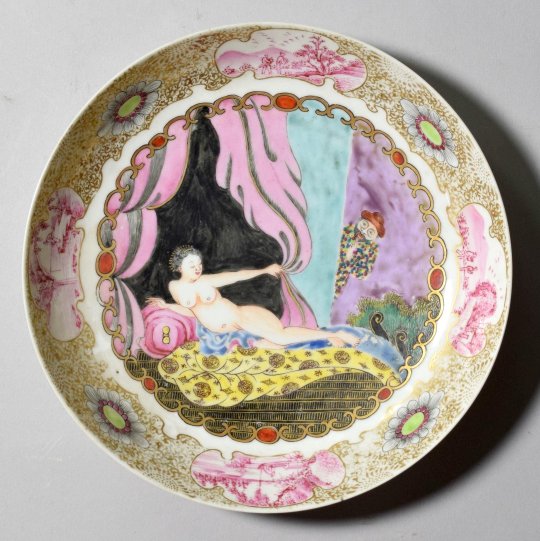
Porcelain dish decorated in overglaze enamels and gilding with a 'gallant' scene, China, Qing dynasty, ca. 1750
“This dish, produced in Jingdezhen in southern China and decorated in Canton, belongs to a group of Chinese export wares characterised by erotic or 'gallant' subjects. The particular scene on this example shows a reclining naked woman being viewed by a voyeur or 'peeping Tom' dressed as Harlequin. Erotic subjects were part of the Chinese tradition, but this theme can only be found on porcelain exported to Europe.”
(via V&A)
43 notes
·
View notes
Text
The ultimate unique artistic charm, exquisite craftsmanship, and flawless beauty.
#handpainted#morimatea#teacup#beautiful#painted art#artwork#tea shop#teacupaddict#ingenuity#traditional art#traditionalart#handicraftstore#amazingbeauty#teacupcollector#mastercraft#craftmanship#mastercraftsman#inheritance#jingdezhen
13 notes
·
View notes
Text
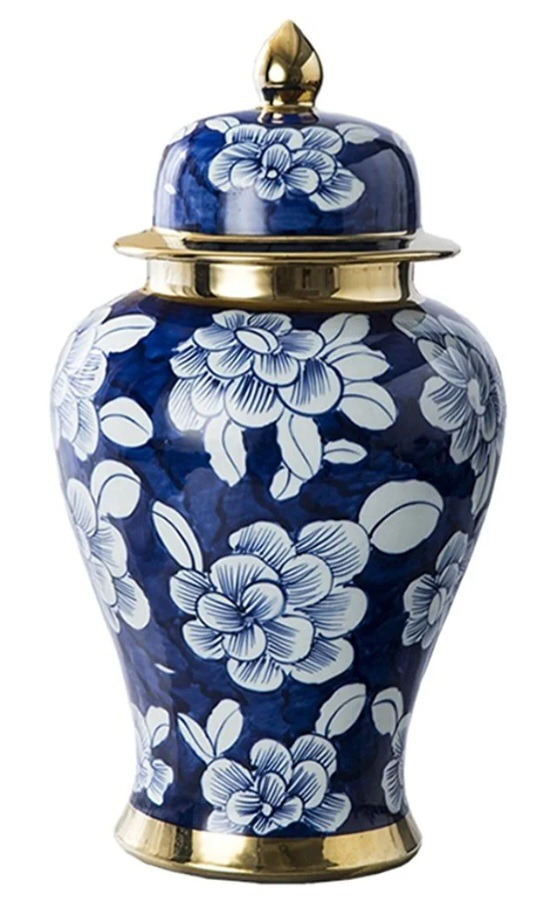
20 notes
·
View notes
Text
Van Achterbergh-Preis 2024: Leeuwarden (NL) bis 04.05.2025
Bis zum 4. Mai 2025 zeigt das Keramiekmuseum Princessehof in Leeuwarden eine Ausstellung mit Werken aus der Sammlung der Galerie Terra Delft. Die Galerie wurde in diesem Jahr mit dem Van Achterbergh-Preis (17.500 €)für ihr leidenschaftliches und beharrliches Engagement für die Keramik in den Niederlanden ausgezeichnet. Die Galeristinnen Joke Doedens und Simone Haak sammeln seit 1986 führende…
#angewandte Kunst#Carla Koch#De Witte Voet#Galerie Terra Delft#Handwerkskunst#Institution#J.W.N. van Achterbergh#Jingdezhen#Künstler#Keramiekmuseum Princessehof#Keramik#Kunsthandwerk#Nachlass#Sanbao Ceramic Art Institute#Stiftung#Van Achterbergh-Preis
0 notes
Text
Hundred Sons Welcome Blessings enameled Jingdezhen old clay tea ware, authentic handmade high temperature kiln-fired, with special meaning .
1 note
·
View note
Text
La Céramique à travers les âges : Le XVIe siècle
Le XVIe siècle marque une époque florissante pour l'art de la céramique à travers le monde. Chaque région développe ses techniques et esthétiques propres, influencées par des échanges commerciaux et culturels intenses.
#Alain Prévet#Bernard Palissy#Céramique#Château d&039;Ecouen#Château de la Bâtie-d&039;Urfé#François 1er de Médicis#Guido Andriez#Histoire#Jingdezhen#Loges du Vatican#Masséot Abaquesne#XVIe siècle
0 notes
Text
Hoe Ai Weiwei me teleporteerde naar mijn 'The Beijing Project' in Peking
Door de grote expositie van de bekende Chinese dissident Ai Weiwei in de Kunsthal van Rotterdam werd ik regelmatig naar Peking 2008 geteleporteerd toen ik daar mijn 'The Beijing Project' had. Hoe en wat? Zie Toos&ART van deze week. #art #kunst #expo
Ai Weiwei. Van Genua (vorige week) even switchen naar Rotterdam en China. Nou ja, naar China’s beroemdste dissident dan wel. En naar Rotterdam voor zijn grote overzichtsexpositie in de Kunsthal daar (nog tot 3 maart). Die mij dan weer terugbracht naar 2008, naar mijn ‘The Beijing Project’ in Peking. in mei 2008 bezig aan mijn ‘The Beijing Project’ in Peking Kunstenaar Ai Weiwei, de man van…

View On WordPress
#Ai Weiwei#architectuur#artist in residence#Beijing#censuur#China#Chinese dierenriem#cultuurkritiek#culuurschatten#dissident#duplicaat#fontein#geheime dienst#gevangenschap#Grote Sprong Voorwaarts#hongersnood#hutong#installatiekunst#Jingdezhen#kijkdoor#kopieerkunst#kunstactivisme#kunstenaarsenclave#kunstgeschiedenis#Kunsthal Rotterdam#London Turbine Hall#maatschappijkritiek#Mao#massaproductie#metafoor
0 notes
Text
This pair of mould-made porcelain lion-dogs or ‘dogs of fo’ are shown standing on leaves with their mouths open and tails erect. The lioness is painted green with an aubergine mane and a yellow cub climbing her right leg. The lion is yellow with a green mane and moveable green brocade ball beneath his left paw; his eyes wobble on stalks. At the back are tubes for incense sticks. These were made as curiosities for a scholar’s desk to perfume the room but were very popular in Europe in the 18th century.
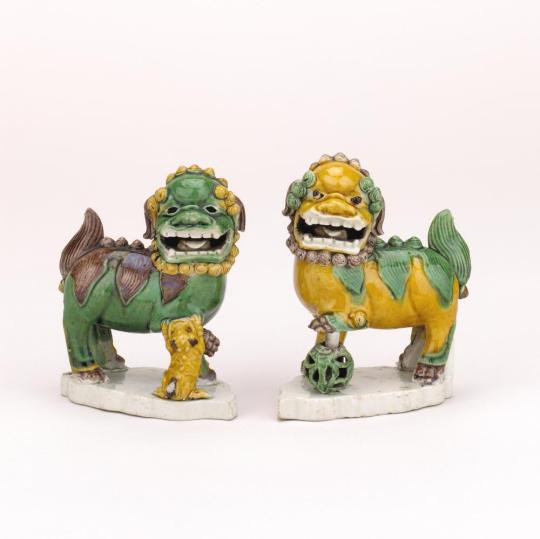
▪︎ Pair of lion-dogs or ‘dogs of fo’.
Period: Qing dynasty; Reign of Kangxi
Date: 1662-1722
Place of origin: China: Jiangxi (province); Jingdezhen
Medium: Porcelain
63 notes
·
View notes
Text

Cup and Saucer, made in Jingdezhen mid 18th Century, decorated in London ca. 1760
From the Victoria & Albert Museum
#cup#teacup#saucer#tea#jingdezhen#english#18th century#mid 18th century#1760#1760s#1700s#porcelain#ceramics#history#georgian
41 notes
·
View notes
Photo
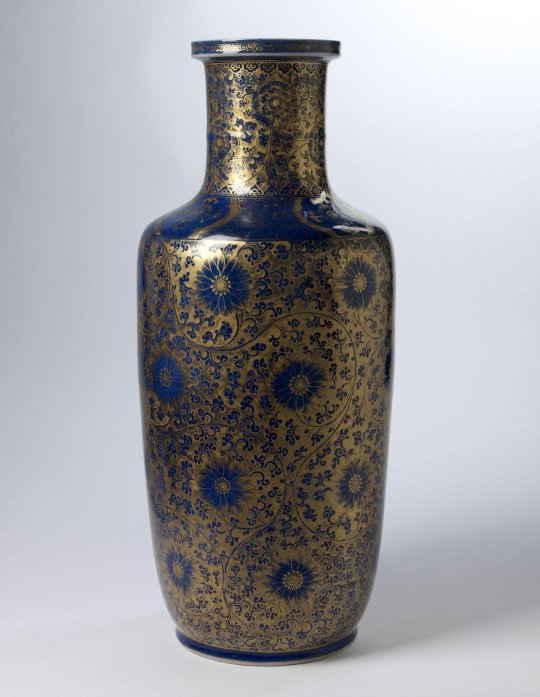
Porcelain rouleau vase with powder-blue glaze and gilded decoration, Jingdezhen, China, Qing dynasty; ca. 1700.
“This type of glaze was called chuiqing or 'blown blue' in China, and known as bleu soufflé or fouetté in Europe. The powdered cobalt was blown through a bamboo cane that had a fine gauze at one of the extremities.
Objects with powdered blue glaze were produced since the late 17th century, and by the early 18th century fine gilded decorations of flowers, landscapes and symbolic motifs were added on the surface. They were particularly favoured in the Middle East but also widely exported in Europe.”
(via V&A)
31 notes
·
View notes
Photo
Here we go
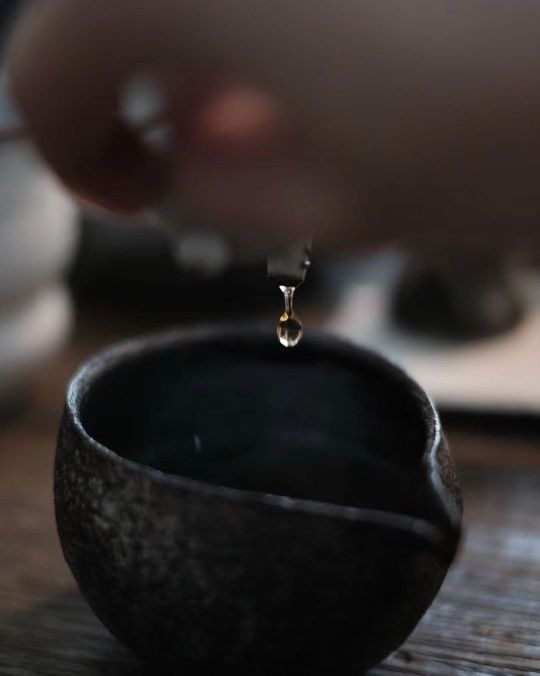
Tea…
. . . #drinktea #brewtea #havetea #chinesetea #ceramicart #zen #wabisabipottery #jingdezhen #ceramist #blackpottery #handbuiltclay #teatable #lightson #lightart #photoeveryday #bestceramics #ceramitique https://www.instagram.com/p/Cl9BCCku1dd/?igshid=NGJjMDIxMWI=
#drinktea#brewtea#havetea#chinesetea#ceramicart#zen#wabisabipottery#jingdezhen#ceramist#blackpottery#handbuiltclay#teatable#lightson#lightart#photoeveryday#bestceramics#ceramitique
2 notes
·
View notes
Text


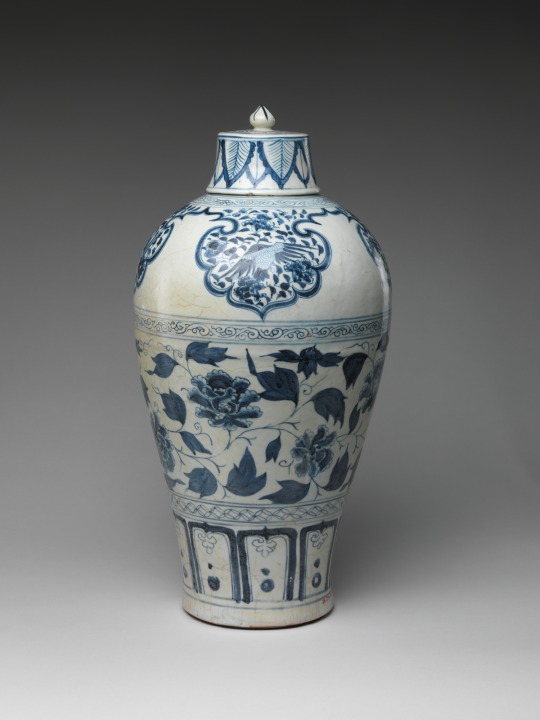
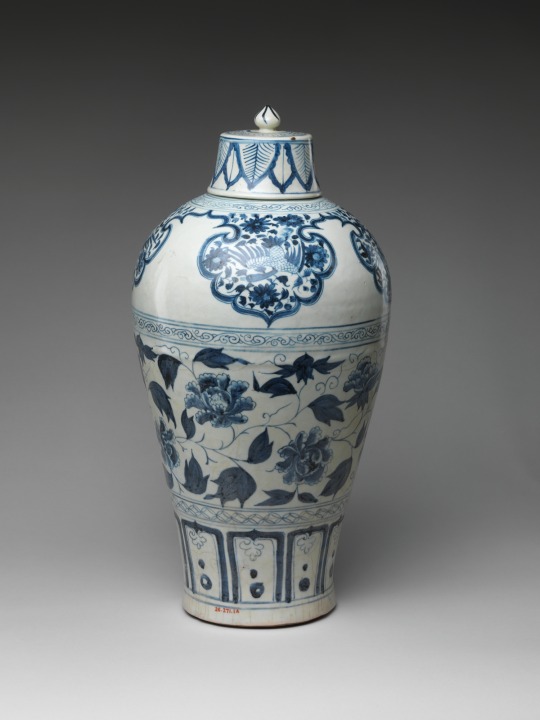
Bottle with Peony Scroll, mid-14th century
Yuan dynasty (1271–1368), China
Porcelain painted with cobalt blue under a transparent glaze (Jingdezhen ware)
H. 17 1/2 in. (44.5 cm)
The structured surface of this bottle ultimately derives from the Islamic cultures of West Asia. The designs painted on the surface of the bottle also illustrate the complicated ties between China and other regions in the fourteenth century: the patterns on the neck parallel the cloud-collar designs often found in textiles and clothing in China and the Islamic world; the scrolling peonies that decorate the center of the bottle derive from longstanding Chinese traditions; and the stylized lotus petals on the base allude to imagery found in Indo-Himalayan art. Collection of the Metropolitan Museum of Art
#Chinese#Yuan dynasty#art#art history#ceramic#porcelain#Jingdezhen ware#monochrome#blue#cultural amalgam#pattern#design#textile art#flowers#peony#lotus#leaves#14th century#The Met#metropolitan museum of art
23 notes
·
View notes
Text
#FrogFriday:
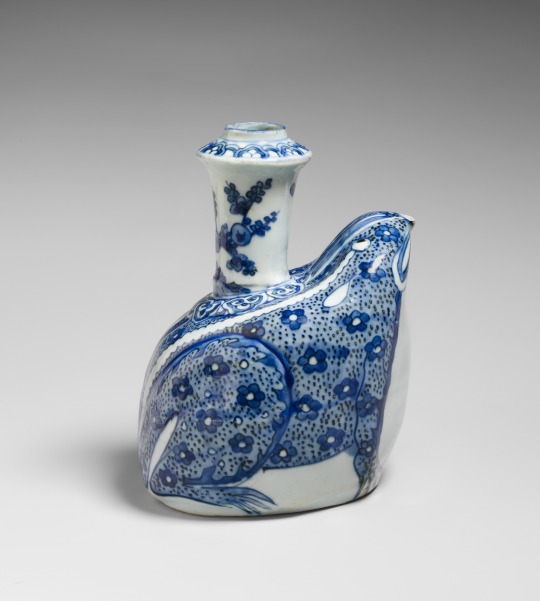
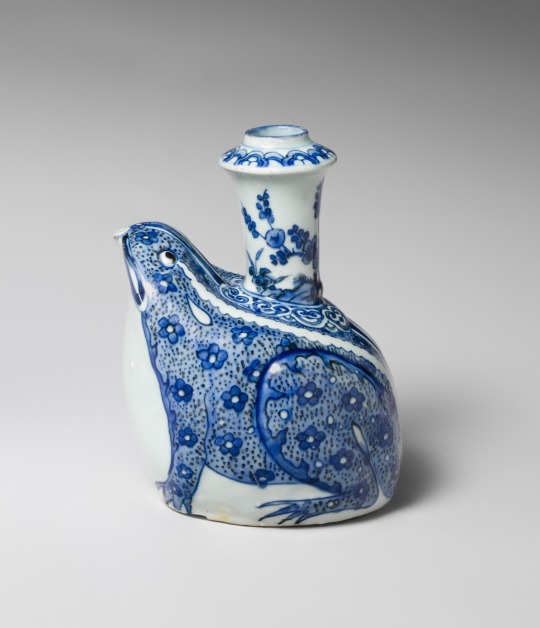
Frog-Shaped Pouring Vessel (Kendi) China, Ming dynasty, Wanli period (1573–1620), late 16th–early 17th c. Porcelain painted w/ cobalt blue under transparent glaze (Jingdezhen ware) Dimensions: H. 7 1/4 in. (18.4 cm); W. 4 1/2 in. (11.4 cm); D. 5 3/8 in. (13.7 cm) The Metropolitan Museum of Art, New York 2009.107
#animals in art#Chinese art#Asian art#East Asian art#kendi#ceramics#porcelain#Jingdezhen ware#decorative arts#16th century art#17th century art#Metropolitan Museum of Art New York#Frog Friday
23 notes
·
View notes


